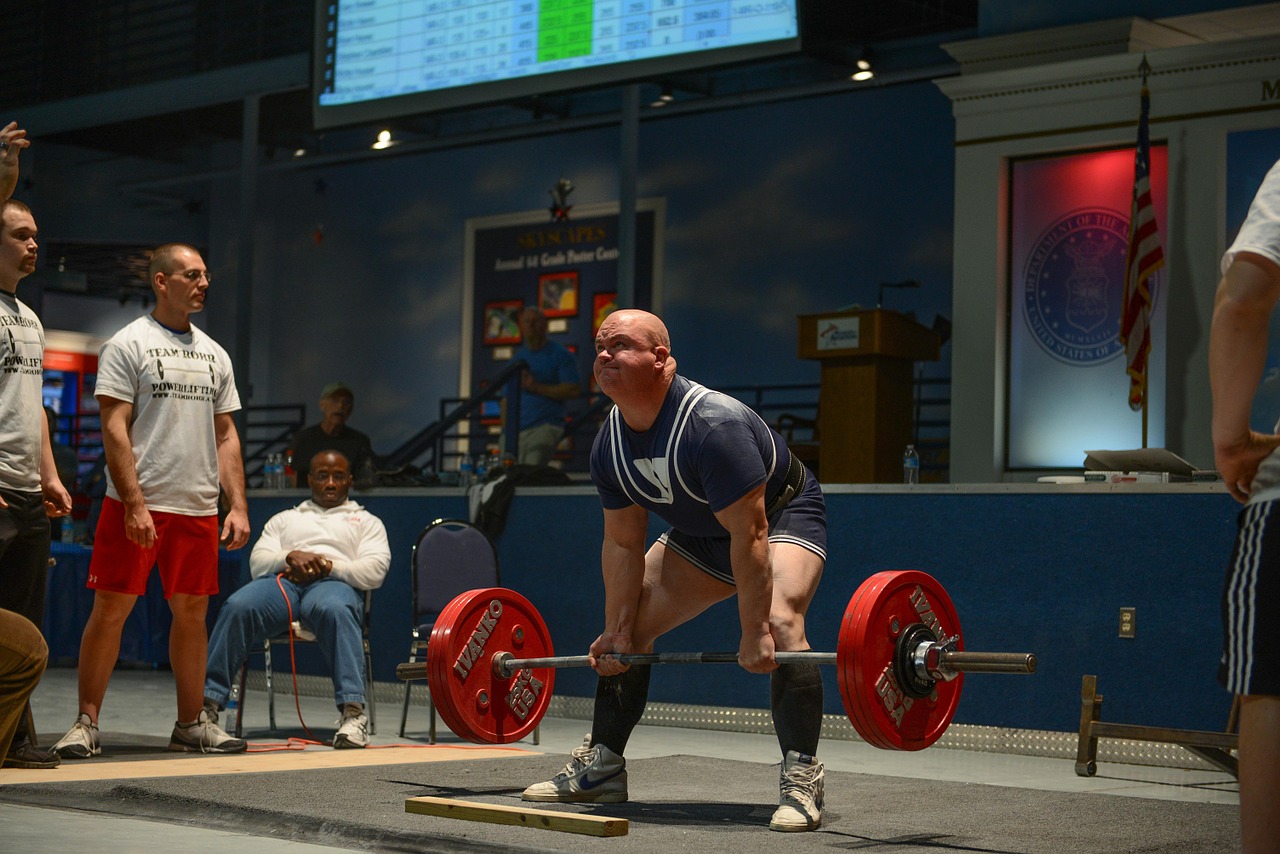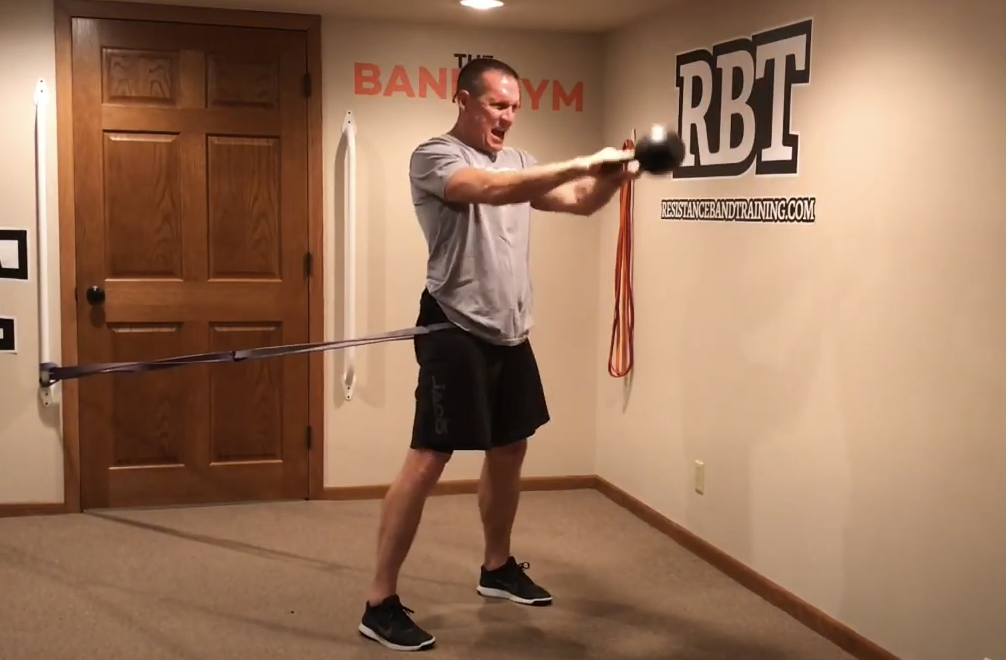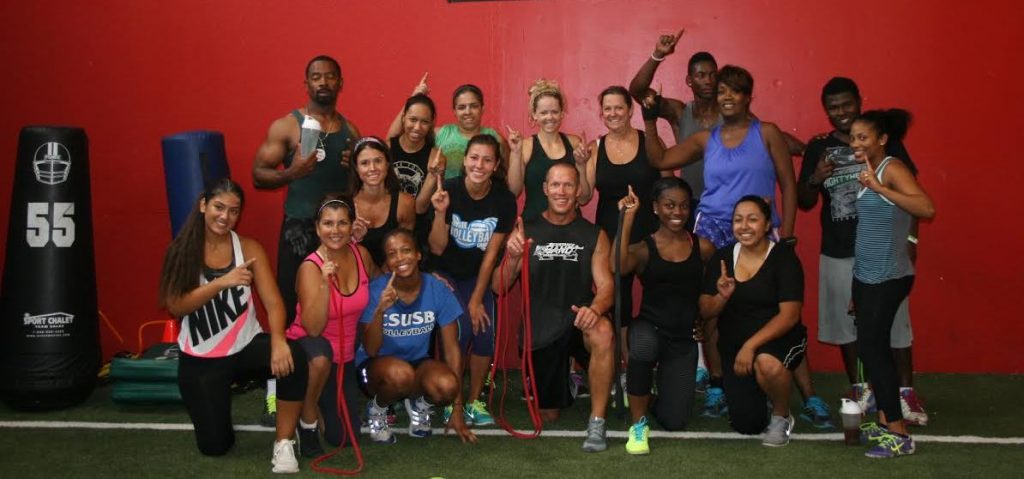I have always said, muscles are dumb.
Muscles don’t think.
They don’t show emotion.
They don’t know the difference between a weight and a resistance band.
What they do is react and adapt to the forces that are applied to them. Resistance bands are a force with an ascending resistance vs. a constant gravity dominated resistance like weights. As a result, resistance bands can impact all forms of strength and in many cases can get faster results with less joint or muscle trauma than weights. Plus, they are far more convenient and versatile.
Let’s address the 5 different types of strength. We’ll also take a look at how RBT’s ascending resistance impacts all of them differently than free weights.
5 Different Types of Strength
1. Explosive Strength and Power
Explosive strength is strength per unit of time. This type of time-specific strength depends on the amount of force you can generate in the shortest amount of time. In terms of strength calculation, it means how fast your body can move from one point to another while working against a resistance.
Free weights offer a constant resistance with constant speed. They don’t allow for acceleration of force. However, a band has an ascending resistance that is variable. It allows for changes in speed which means you can impact time.
Progressive ascending resistance allows individuals to build up speed or accelerate force at the beginning of a movement. This is exactly what you need to train for explosive strength and power.
Power-Based Band Training
2. Strength Endurance
Strength endurance is the amount of force you can generate for an extended period of time. It is the ability to be as strong as possible, as long as possible. This type of strength is characterized by being able to perform a movement repeatedly without being overcome by fatigue.
Strength endurance specifically applies to movements that are done repeatedly for an extended period of time. Examples include running, biking, punching and swimming.
Resistance bands can be applied to the body in a way that you can actually perform strength endurance movements like running and punching. They also allow you to apply horizontal forces to pushing, pulling, squatting and lunging to simulate non-vertical forces of running and punching.
Free weight strength training can only create vertical forces. They cannot simulate endurance movements like running, punching or swimming.
3. Relative (Usable) Strength
In sports and life, relative strength — or how strong you are in relation to your body-weight — is an important, but occasionally overlooked, factor. Relative strength is closely tied to what some call “Usable Strength.”
The key to both relative and usable strength is to recruit the necessary muscles to generate the necessary force at exactly the right time. The only way to gain this type of “real-life” strength is to be able to simulate any movement, at various speeds using various force vectors.
Only resistance bands and their non-gravity dependent resistance can do that. Free weights can build strength, but it will only be in a vertical, at one speed and using a gravity-dominated force vector.
How to Build Usable Locomotion Strength
4. Dynamic or Static Stabilization Strength
Dynamic or static stabilization strength involves improving the stability and strength of the body’s core during movement (dynamic stability) or when the body is stationary (static stability).
Without dynamic core stabilization strength, force production, force transference and force reduction will not occur properly. That means you will not be able to generate proper force to accelerate, decelerate or coordinate movements efficiently. This will lead to altered joint mechanics and eventual injury.
Resistance bands impact stabilization strength better than free weights for two reasons:
- Bands allow you to train multi-planar, multi-joint dynamic stability or static stability because they can simulate any movement.
- A band’s ascending resistance gets harder the further the arms or legs are taken away from the core. Therefore, it challenges stability at the weakest part of the motion. This is when arms and legs are furthest from the body’s center of gravity.
Constant free weight training can’t simulate any movement. It actually creates less stabilization demand the further the arms and legs get away from the body’s core.
Perfect Example of RBT Stabilization Versatility Doing Simple Plank
5. Absolute Strength
The final type of strength is absolute strength. Absolute strength is often defined as maximal strength or force the body can generate that can be quantified. It needs to be quantified. Therefore, free weights are the best option since a band’s resistance is difficult to quantify.
Power-lifting is the best example of where this type of absolute strength is most notable. Without a doubt, free weights are the best tool to build absolute strength. However, achieving maximal absolute strength will be difficult without tri-plane stability, power and mobility, as the power-lifting society has shown. RBT impacts better for all.
As a result, contrast training (combining bands and weights) is very often used in the power-lifting community.
Summary
You can incorporate RBT into your strength training program regardless of the different types of strength you are trying to achieve. Free-weight training alone will not allow you to optimize your strength. It definitely will not create usable strength. Plus, resistance bands are going to be far more sustainable from a longevity standpoint.




